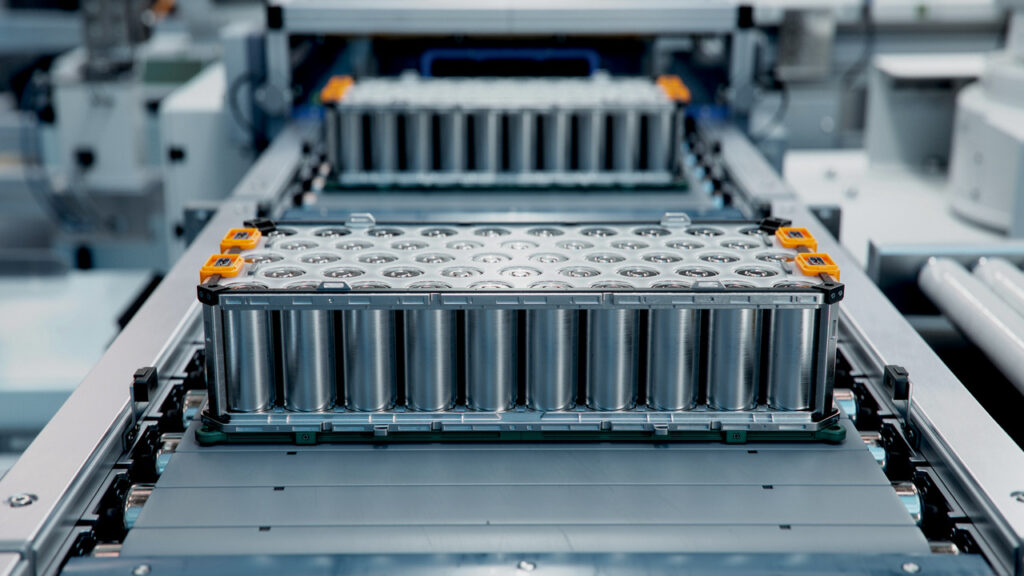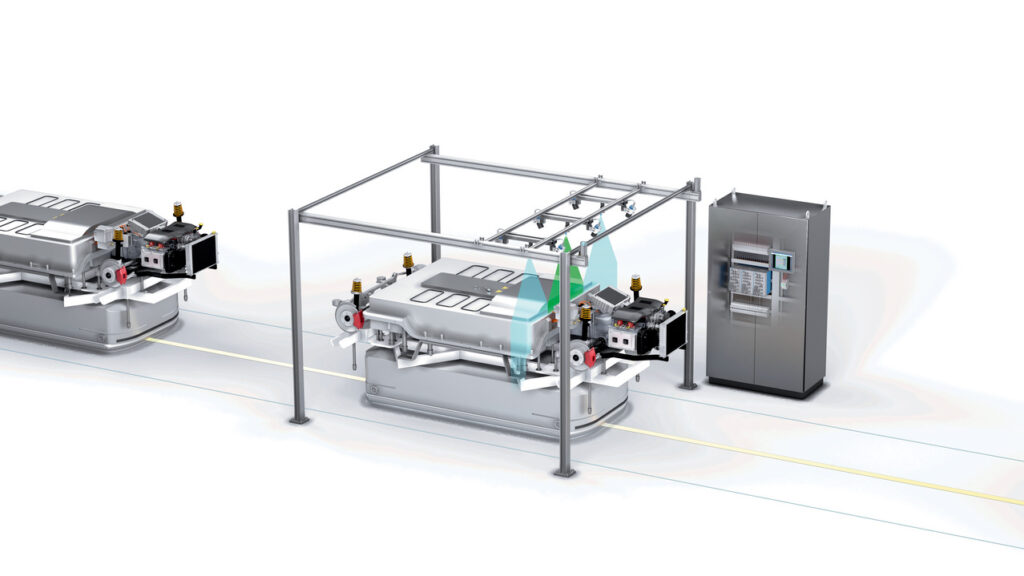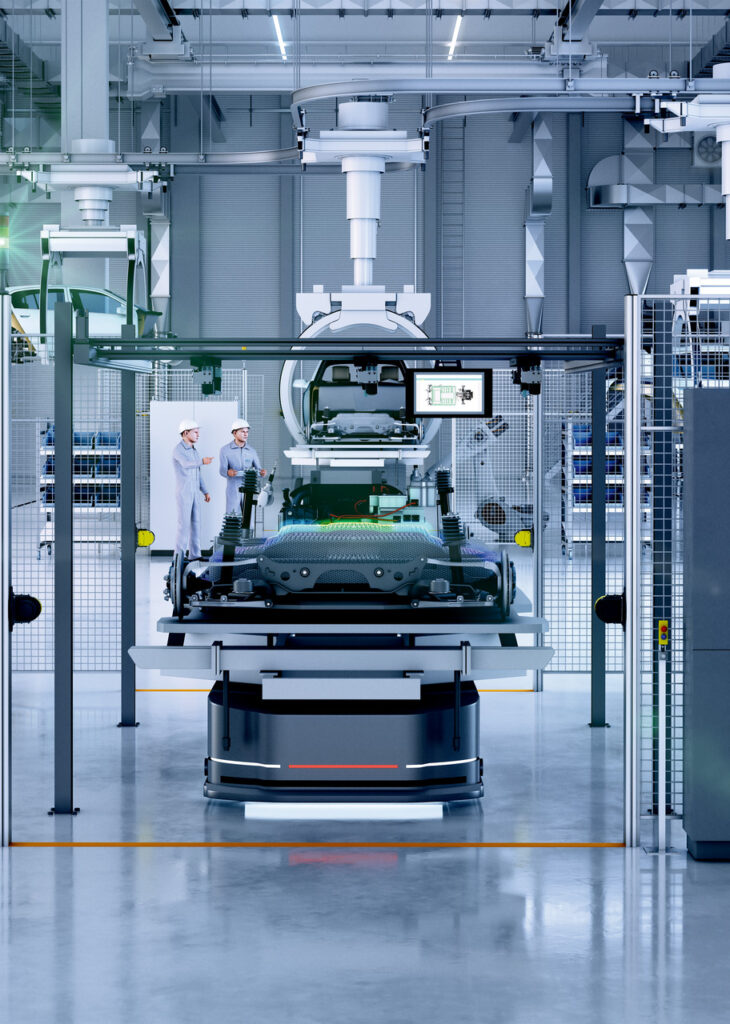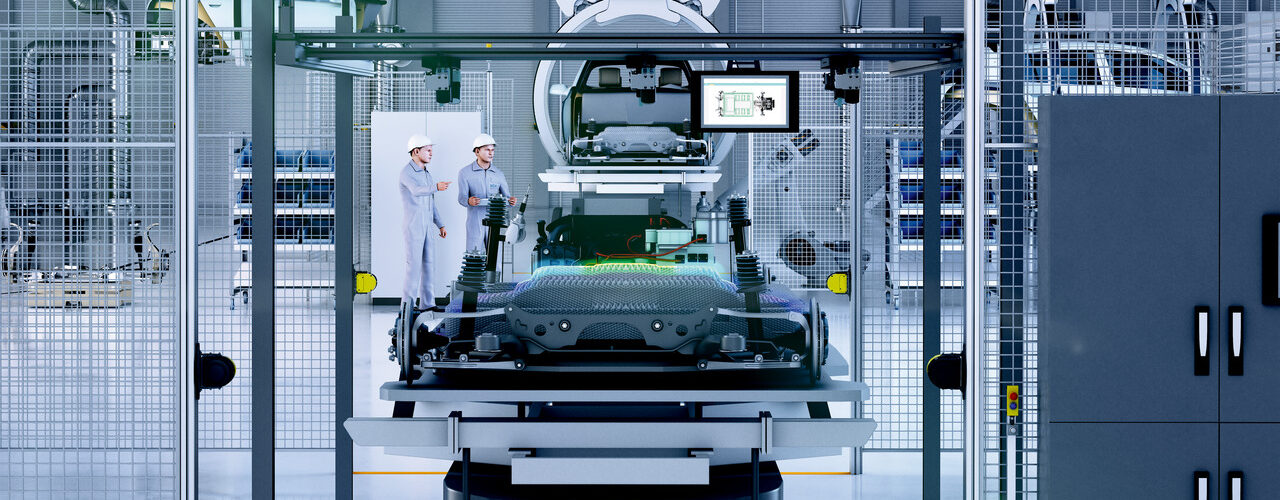The challenges associated with Foreign Object Detection and why it’s a critical component of high voltage battery assembly
When assembling high-voltage batteries for electric vehicles, precision is paramount. Particularly during transitions between manual and partially automated assembly processes, the presence of unnoticed foreign objects poses a significant risk, potentially causing surface damage to the batteries.
Sensors for foreign object detection on high-voltage batteries, particularly in applications such as electric vehicles (EVs) and energy storage systems, is crucial to ensure the safety and reliability of the battery systems. And as global EV production continues to increase to several million vehicles per year, this becomes even more critical.

The Risks of High Voltage Assembly
Any damage caused to the batteries in the assembly process can lead to short circuits or even fires in electric vehicles and production facilities, resulting in substantial property damage and personal harm. Implementing a foreign object detection system helps mitigate this risk by enabling precise and contactless inspection of the battery surfaces.
Failure to detect foreign objects early in the manufacturing or assembly process can result in costly rework, repairs, or even recalls. Implementing effective foreign object detection systems helps prevent such incidents, reducing production downtime, warranty claims, and associated costs.

So why is it important to detect foreign objects?
Foreign objects can compromise the performance and reliability of high-voltage batteries. They can disrupt electrical connections, cause insulation failures, or induce mechanical stress on battery components, leading to premature wear and potential failure of the battery system. Detecting and removing these foreign objects helps maintain the reliability and longevity of the battery.
Even minor foreign objects can impact the efficiency of high-voltage batteries. For example, debris or contaminants on the battery surface can create localized hotspots, reducing the overall efficiency and energy storage capacity of the battery. By detecting and eliminating foreign objects, the battery system can operate at optimal efficiency levels.
Various industry standards and regulations mandate the implementation of foreign object detection measures in high-voltage battery systems. Compliance with these standards not only ensures the safety and reliability of the battery but also fosters trust among consumers and regulatory bodies.
Challenges of detecting foreign objects in high-voltage batteries
High-voltage batteries for electric vehicles often have complex and tightly integrated designs, making it challenging to access all areas for inspection. Some parts of the battery may be enclosed or inaccessible, increasing the difficulty of detecting foreign objects.
In addition, foreign objects can vary widely in size, shape, and material composition. Detecting all types of foreign objects, from large debris to tiny particles, requires versatile detection methods capable of identifying a broad range of contaminants.
Achieving high sensitivity in foreign object detection is essential for detecting even small contaminants that could pose safety risks. However, high sensitivity can also increase the likelihood of false positives, where benign features are mistaken for foreign objects, leading to unnecessary alarms or inspection delays.

High-Speed 3D cameras from SICK
Integrated with high-speed cameras, the Foreign Object Detection system from SICK generates a 3D profile of the high-voltage battery surface. Sophisticated software then analyzes the surface to detect any foreign substances present. The results of this analysis can be promptly displayed, allowing for immediate action if any anomalies are detected.
As a result, it leads to:
- Detection of the smallest foreign objects through three-dimensional inspection of various high-voltage battery variants.
- No additional illumination is required due to laser triangulation image acquisition.
- The inspection quality is always consistently high and stable, even with challenging surfaces.
- Reliable and accurate measurements on different light and dark surfaces, regardless of their texture and color.
- Intelligent algorithms enable the detection of a wide variety of foreign objects, such as screws, nuts, or tools.





